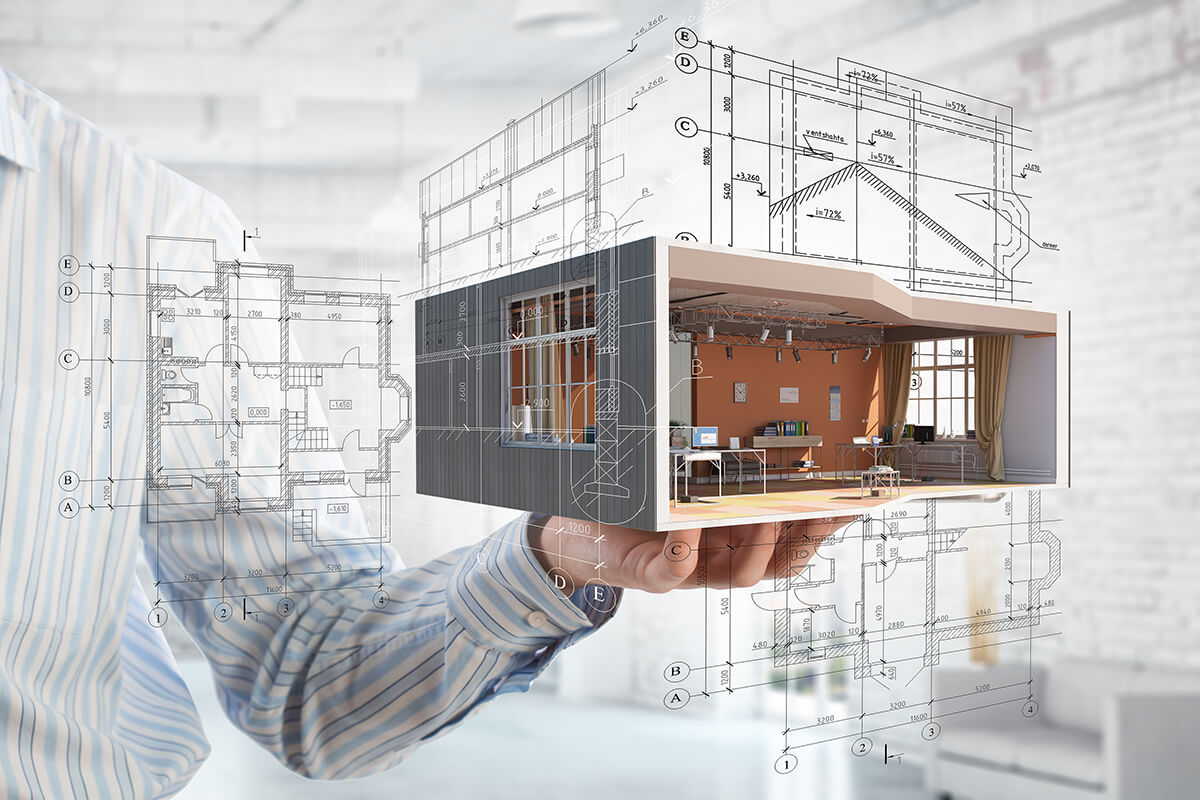Architect Recommended Tools for 3D Modeling
Architect Recommended Tools for 3D Modeling
Blog Article
Comprehending the Diverse Profession Paths Available for Aspiring Architect
As a hopeful Architect, you have a world of occupation paths awaiting you. Each course supplies special difficulties and possibilities to apply your creativity and technical knowledge. Whether you're drawn to traditional architecture or the nuances of sustainable layout, there's a niche that aligns with your interests. Comprehending these varied alternatives can form your specialist journey, but which instructions will you pick to explore first?
Traditional Architecture: Creating Structures and structures
Conventional architecture focuses on making buildings and frameworks that mix performance with visual appeal. As you discover this area, you'll value the complex balance in between type and purpose. You'll find out to attract motivation from historic styles, including aspects like balance, materials, and craftsmanship. Your layouts can reflect social heritage, showcasing local customs while fulfilling modern-day demands.
You'll create skills in composing, model-making, and site evaluation, enabling you to visualize and interact your ideas effectively. Engaging with customers, you'll need to comprehend their vision and convert it right into viable styles.
In addition, building codes and sustainability methods are important in your work, guaranteeing your structures are eco friendly and secure. As you grow in your job, you'll locate possibilities in household, industrial, or perhaps remediation tasks, each offering special challenges. Embracing traditional style paves the means for a fulfilling career that pays homage to the past while shaping the future.
Urban Planning: Forming Neighborhoods and Public Spaces
As an ambitious Architect, you can play a crucial role as a city coordinator, transforming exactly how neighborhoods engage and work. By using community engagement approaches, you'll guarantee that homeowners have a voice in shaping their atmosphere. Plus, incorporating lasting layout concepts will certainly help create spaces that not just fulfill today's requirements yet likewise shield the future.
Function of Urban Planners
While several could think about architects as the sole visionaries behind structures, city organizers play a crucial duty fit the more comprehensive landscape of neighborhoods and public spaces. They examine land use, zoning legislations, and area needs to develop lasting environments that boost top quality of life. By teaming up with various stakeholders, you'll assist create parks, transport systems, and houses that promote social communication and accessibility. Urban coordinators additionally concentrate on environmental considerations, making certain that growths integrate eco-friendly spaces and support biodiversity. Your experience in spatial layout and area characteristics permits you to picture future development while preserving social heritage. In this critical duty, you'll directly influence how people experience their environments, making every job a possibility for positive adjustment.
Community Interaction Approaches
Efficient neighborhood engagement techniques are important for urban planners to ensure that the voices of locals are listened to and valued in the preparation process. To foster meaningful discussion, you need to focus on open forums and workshops where area members can express their concepts and concerns. Usage surveys and social media to get to a wider target market, making sure varied perspectives are consisted of. Working together with regional companies can enhance trust and assist in much deeper connections. It is essential to provide clear details concerning decision-making processes and proposed tasks, allowing locals to feel informed and equipped. By proactively including and listening comments, you'll develop areas that show the neighborhood's needs, inevitably resulting in more lasting and effective metropolitan atmospheres. Embrace openness and constant discussion for long-term impact.
Sustainable Style Principles
When developing metropolitan areas, incorporating sustainable style principles is essential for creating settings that thrive both environmentally and socially. You ought to start by concentrating on energy performance, utilizing products that minimize waste and advertise recycling. Consider integrating environment-friendly rooms, like parks and yards, to improve biodiversity and boost air quality. Advertising walkability and public transport can lessen dependence on automobiles, fostering a healthier area.
Designing with water conservation in mind is likewise crucial-- think of rain yards and absorptive surface areas to handle stormwater. Entailing community participants during the preparation process assurances that the spaces you create fulfill their demands and encourage social communication. By embracing these principles, you'll add to vibrant, lasting city landscapes that benefit everybody.

Landscape Architecture: Developing Lasting Outside Atmospheres
As you explore landscape design, you'll discover vital style principles that develop useful and beautiful outside rooms. Lasting methods play a vital role in making sure these environments thrive while reducing ecological effect. And also, you'll locate a selection of job chances that allow you to make a genuine distinction in exactly how individuals engage with nature.
Design Concepts in Landscape
Comprehending style concepts in landscape design is crucial for creating lasting outside environments that harmonize with nature. You'll need to consider elements like balance, scale, and percentage to ensure your designs really feel cohesive and welcoming. In addition, pay attention to seasonal adjustments, developing with products that complement the environments year-round.
Lasting Practices Overview
Sustainable methods in landscape style not only focus on aesthetic appeals yet also prioritize environmental wellness and resource conservation. You can develop areas that advertise dirt health, such as utilizing natural products and exercising permaculture principles. Eventually, these methods assure your designs benefit both people and the atmosphere for years to come.
Job Opportunities Expedition
With a strong foundation in sustainable methods, landscape style supplies a range of job paths that allow you to make a purposeful effect on the atmosphere. You can work as a landscape developer, developing aesthetically pleasing and practical exterior rooms, or concentrate on eco-friendly restoration, helping to revive damaged communities. Urban coordinators commonly team up with landscape designers to produce green spaces in urban setups, improving city livability. If you're enthusiastic about education and learning, consider becoming a landscape design educator, motivating future generations. Furthermore, you could function with nonprofits concentrated on environmental sustainability or involve in research to introduce new practices. Each course not just shapes stunning environments yet likewise promotes a much healthier world for future generations.
Lasting Design: Concentrating On Eco-Friendly Practices
As you discover your profession in style, embracing environmentally friendly techniques can set you apart in an affordable field. Sustainable layout focuses on developing buildings that minimize ecological effect while boosting resident well-being. By including sustainable products, energy-efficient systems, and lasting building strategies, you'll add to a greener future.
Begin by acquiring expertise of eco-friendly accreditations like LEED or BREEAM, which can strengthen your qualifications. Take into consideration exactly how all-natural light, ventilation, and thermal effectiveness can optimize style. Work together with engineers and environmental experts to introduce options that minimize waste and save resources.
Do not forget the significance of neighborhood participation-- interesting neighborhood stakeholders can inspire styles that balance with the setting. As clients increasingly prioritize sustainability, your experience in environmentally friendly practices will not only draw in jobs however likewise satisfy your passion for accountable design. Embrace this essential aspect of the profession, and see your career prosper.
Historical Preservation: Safeguarding and Bring Back Cultural Heritage
While you commence on your useful reference architectural journey, think about the necessary duty of historical preservation in maintaining our social heritage. This field focuses on the security and reconstruction of considerable structures, sites, and structures that inform the tales of our past. By taking part in historical conservation, you'll help protect the architectural legacy that forms neighborhood identification.
As a historic conservation Architect, you'll analyze historical relevance and evaluate the condition of structures. You'll work closely with historians and conservationists to assure authentic remediation methods are used. This job course allows you to blend creative thinking with research, enabling you to create solutions that appreciate initial products and craftsmanship.
Your job not just adds to sustainability by recycling existing structures however likewise cultivates a feeling of satisfaction within areas. Embracing this course will certainly aid you end up being a guardian of history, maintaining the stories and aesthetic appeals that enrich our lives.
Inside Design: Enhancing Indoor Spaces
Historic conservation and interior design both share a commitment to boosting the built environment, but they concentrate on different facets. While historic conservation stresses preserving a structure's cultural and historical worth, indoor style zeroes in on maximizing indoor areas for capability and visual appeals.
As a hopeful Architect, you'll discover that indoor style enables you to blend creative thinking with technological skills. You'll make areas that not just look excellent but likewise promote convenience and efficiency. This area involves comprehending exactly how light, color, Extra resources and products interact within a space, affecting mood and use.
You'll deal with different jobs, from property homes to commercial offices, guaranteeing that each environment meets the demands of its owners. By prioritizing user experience, you can transform insides right into useful and motivating areas, making a significant influence on exactly how people interact with their surroundings. Welcome the opportunity to improve indoor atmospheres and form the means individuals live and work.
Industrial Layout: Merging Performance With Aesthetic Appeals
Industrial layout plays a crucial function in producing products that seamlessly blend visual appeals with functionality, guaranteeing that what you make use of daily is not only visually appealing however likewise practical. As you can try here an aspiring Architect, you might engage yourself in this field, concentrating on creating whatever from furniture to consumer electronics. Your job includes understanding user needs, materials, and producing processes, allowing you to develop innovative solutions that boost day-to-day experiences.
In industrial style, you'll usually team up with engineers, manufacturers, and marketing professionals, making certain that your layouts are not only beautiful but also possible. This career course offers a vibrant environment where creative thinking satisfies functionality, making it a fulfilling selection for designers interested in shaping the items of tomorrow.
Frequently Asked Concerns
What Educational Credentials Do I Required to Come To Be an Engineer?
To become an architect, you'll need a professional degree in style, usually a Bachelor's or Master's. Additionally, you'll have to complete an internship and pass the Architect Enrollment Examination to exercise lawfully.
Are There Accreditation Requirements for Various Building Career Paths?
Yes, there're accreditation needs for different building paths. Architect. You'll require to pass examinations, full internships, and in some cases seek specialized training, depending on your chosen focus, like landscape design, urban design, or historic conservation
What Software Program Skills Are Crucial for Designers Today?

Exactly How Can I Gain Practical Experience While Examining Architecture?
You can get sensible experience by interning at building firms, taking part in style competitors, volunteering for community jobs, or collaborating with classmates on real-world projects. These possibilities boost your skills and construct important connections in the industry.
What Job Opportunities Exist Outside Standard Architecture Firms?
You can discover different work chances outside standard design companies, like metropolitan preparation, interior layout, landscape design, construction administration, real estate advancement, or also roles in sustainability consulting. Each offers unique obstacles and incentives.
Whether you're drawn to conventional design or the nuances of lasting design, there's a niche that straightens with your interests.When creating urban rooms, including lasting design principles is critical for creating settings that thrive both ecologically and socially.As you check out landscape style, you'll discover necessary layout concepts that develop functional and beautiful outside spaces.Recognizing style principles in landscape style is crucial for developing sustainable exterior environments that balance with nature.In commercial design, you'll usually collaborate with makers, engineers, and online marketers, making sure that your layouts are not only gorgeous yet additionally feasible.
Report this page